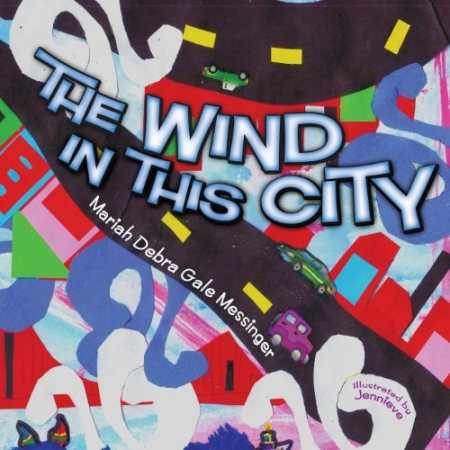The Wind in this City
Enticing illustrations, evocative word choice, and an inquisitive teaching tool work together to build this lovely narrative about the beauty of wind.
The Wind in this City brings the personalities of San Francisco’s wind to life through poetry, colorful collage, and a bevy of preschool and kindergarten activities that reveal iconic San Francisco landmarks and teach children about aspects of wind.
The double-spread layout offers pastel backdrops of watercolor to complement the words featured on the left side of the page. The illustrations are enticing, composed of a mixed media collage of blue and white construction paper swirls to portray the wind—light, open swirls for gentle winds, and condensed, darker swirls for “wicked” wind. The simple, two-dimensional cut-out figures of children playing among the swirls function as artwork that can be copied by preschoolers and may serve to inspire artistic creations.
The poem and illustrations work together to offer a good sense of the wind’s changing personality, as it “drifts, lightly, / Offshore from the land,” and later becomes an ocean wind “Of salt and spray, / Streaming in, / Screaming in, / At the end of the day.” A fun aspect of the book is the way it invites the audience to learn and recognize the silhouettes of certain landmarks, such as Coit Tower, or to discover the detailed representations of sights and sites of San Francisco, such as the Golden Gate Bridge, Japanese Tea Garden, or a small seagull.
While the text of the poem can be distracting in its haphazard rhymes, with some pages featuring a rhyming pattern and others not, the lines are usually short and to the point, capturing and holding the attention of the intended preschool audience: “The wind in the city / Blows the leaves / Down the sidewalks.” Choice words offer onomatopoeic effects, such as, “It whoos and whistles / Across my chimney.” These enliven the performance of the person reading out loud and promote listening for further clues to the wind’s presence. At times, however, the rhyme seems contrived and might not be clear to young children: “It gives power to the waves / And makes them white crested. / It gives signals to the surfers / Who have so much invested.”
The real meat of the book appears after the poem and illustrations. Here, there is an educational note to parents and teachers that offers numerous questions to promote discussion of the wind and its intangible elements: “Can you see the wind?” “How can you tell that the wind is blowing?” In addition to offering a basic explanation of the wind’s purpose on earth, there is a list of seven activities that promote movement—“Go fly a kite!”—or using the senses—“Listen carefully to hear the wind.” There is also a list of items for children to search for in the illustrations.
The Wind in this City is an eye-catching, engaging, and thought-provoking book that inspires young children to discover and learn about the wind.
Reviewed by
Maya Fleischmann
Disclosure: This article is not an endorsement, but a review. The publisher of this book provided free copies of the book and paid a small fee to have their book reviewed by a professional reviewer. Foreword Reviews and Clarion Reviews make no guarantee that the publisher will receive a positive review. Foreword Magazine, Inc. is disclosing this in accordance with the Federal Trade Commission’s 16 CFR, Part 255.

